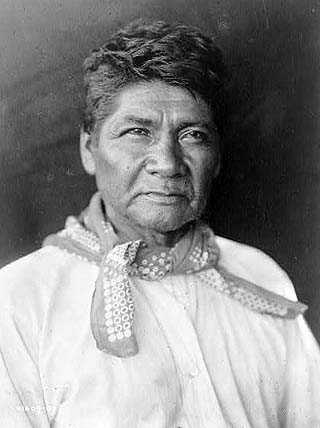History
Fiestas
Indian agents, not understanding the important role of the ceremonial events that came to be known as
fiestas, tried to bring them to an end. This was so serious a threat to their communities that School
Superintendent William H. Stanley, whose policies had been particularly destructive to the fiesta
tradition, was murdered on Cahuilla Reservation in 1912. Stanley's murderers were sent to prison for
subsequent years in the encouragement of Indian participation in county fairs as a substitute for
fiestas. Indian babies were entered in "best baby" contests; jams, jellies, and baked goods made
by Indian women vied for prizes; and laces and embroideries made by Indian women were likewise
entered in the competitions. Indian agents continued to make the rules for holding fiestas more stringent.
There was also, during the period following Stanley's murder, a decrease in the amount of self-government
permitted the Indians. On some reservations, at least, such offices as Indian judges and Indian police
disappeared, as Indian agents took upon themselves the right to make decisions for the reservation. Unbeknownst
to them, the traditional tribal structure still held, and the nets, paxas, and other tribal officials still
wielded considerable power, but without public display. Also "underground" were the beginnings of a new
political force, the Mission Indian Federation (MIF), which first became public in 1918 when its leaders
from most of the southern California Indian reservations participated in a well-publicized meeting at the
home of a non-Indian sponsor, Jonathan Tibbets, in Riverside. For the next two decades, the MIF was a
force in southern California Indian affairs westward from the Little San Bernardino Mountains. It attempted
to have a shadow governing body at each reservation, working to get rid of the Office of Indian Affairs. It
was instrumental in getting passed a law that permitted the Indians of California to sue the federal government
for taking their lands without a treaty, and without payment. This law led in the end to the Claims Cases of
the 1940s and 1950s. Cahuillas were very active in this organization, along with Luisenos,
Serranos,
Gabrielinos, and Kumeyaay (Bean and Vane 1995, 1997).
1920s & 30s
Cahuillas were very active in the 1920s and 1930s in the struggle to resist the allotment of reservation
land to individual Indians, but eventually Morongo, Agua Caliente, and Tones-Martinez reservations were
allotted. When some Agua Caliente lands became extremely valuable in the 1950s, the U.S. Congress mandated
an equalization process that gave all band members as of 1957 allotments of as nearly equal value as could
be arranged.
Introduction
Material Culture, Technology
Trade, Exchange, Storage
Social Structure
Religion
History
Timeline
Traditional Territory
Major Sources

Tony Marcos - Cahuilla